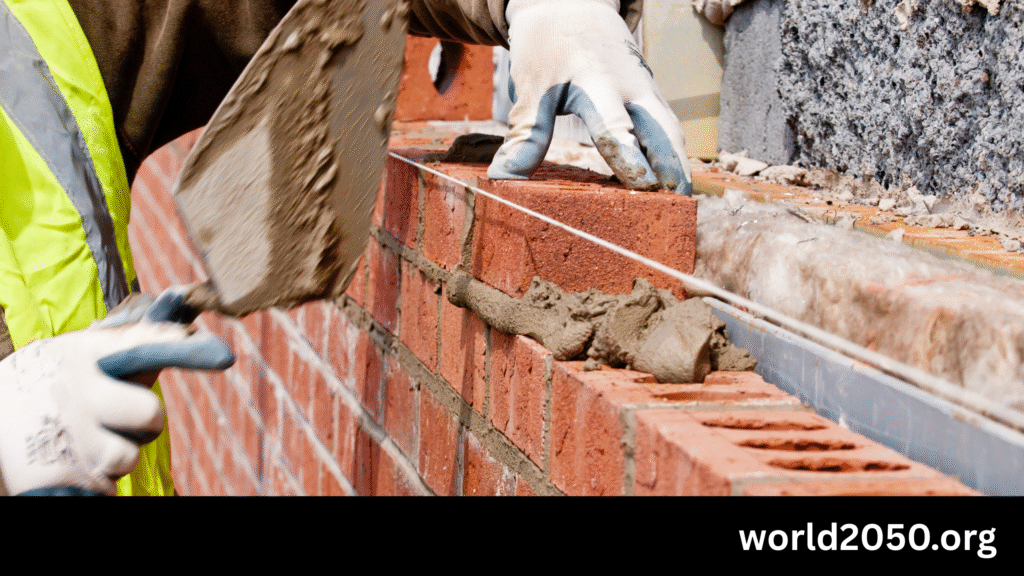Bricks form the core construction material, besides cement, and the type of bricks used in construction clearly plays a major role in the longevity of the structure. Furthermore, bricks play a crucial role in temperature control and moisture repulsion, and are essential to the safety of your home during natural events such as floods, landslides, and earthquakes.
In this article, we will examine the various types of bricks used in construction worldwide and explore the role each type plays in the construction process.
Table of Contents
Mud Bricks
Mud bricks are the most common construction material used throughout history. They are made from baked or burnt mud blocks and can last several millennia. Mud bricks used in the Sindhu Saraswati Civilization (9500 years ago) are still intact in the current age.
Advantages of using mud bricks:
- Easy to create in any shape, any size, and any quantity.
- Raw material is widely available.
Disadvantages of using mud bricks:
- If not baked properly, they absorb moisture.
- Difficult to make in urban regions.
- Cause soil degradation due to removal of fertile top layer for bricks.
Stone Bricks
Sediment Stone Bricks
Sediment stone bricks are popular in coastal areas where coastal erosion exposes sediment bedrocks, which are then cut into brick shapes for construction usage. These bricks are widely popular in coastal regions. They have been used for millennia and can be seen in the structure of ancient iconic temples like the Lingaraj. These bricks have been widely used in coastal Odisha for home and boundary wall construction.
Advantages of using sediment stone bricks:
Disadvantages of using sediment stone bricks:
- They cannot be used for modern buildings due to their high density and relatively heavier weight.
Limestone Bricks
Limestone bricks are made from raw limestone, which is cut into various shapes, including small and large bricks. They are easy to mine from swallow mining pits and make durable homes in areas with less moisture.
Advantages of using limestone bricks:
- Very cheap as they are directly cut from limestone bedrock.
- Can be made available in any size as they are cut using machines.
Disadvantages of using limestone bricks:
- They can dissolve due to water percolation, making them susceptible to failure in high-moisture regions.
Composite Bricks
Mud Composite Bricks
Best For: Boundary Walls, Retainer Walls
Composite bricks are typically made with mud as the base and other materials, such as iron dust, fly ash, and crushed stone, as strength-enhancing components. These bricks are created using composite material technology, the same as fiberglass. Here, the mud serves as the base of the composite, while the additives discussed earlier function as the lattice.
These types of bricks are used for special purposes, such as dam construction, river embankments, retainer walls, and animal control walls for larger mammals, among others.
Advantages of using composite bricks:
- They do not require any special machinery to create; rather, they can be created on-site.
- The substitute materials are readily available, making them easy to create in remote areas where mud bricks are ineffective.
Fly Ash Bricks
Best For: House, Buildings, Boundary Walls, Small Embankments
Fly Ash Bricks are made up of ash from industrial debris created in furnaces. These bricks, when mixed with a binder, some cement, and a few other materials, create one of the strongest building bricks in use.
Advantages of using fly ash bricks:
- These bricks are not damaged by prolonged water exposure and, therefore, are well-suited for tropical climates such as the Indian Subcontinent, Southeast Asia, Latin America, and Central Africa.
- Besides being moisture-resistant, these bricks are also cheap as they are made from industrial waste.
- Fly Ash Bricks are made of burnt ash, which was earlier discarded into the atmosphere, making them more environmentally friendly.
- During construction, when broken into smaller pieces, they retain their properties, making them suitable for use as rubble in smaller quantities.
- A fly ash brick factory can be set up anywhere with minimal capital and space, all around the world, as long as there is an industrial unit producing fly ash nearby.
Disadvantages of using fly ash bricks:
- Require an industrial unit that produces ash, making them less suitable for regions with lower industrialization.
These are bricks made from mining waste from Iron Ore Mines. The mining leaves low-quality dust, which is unsuitable for iron extraction. However, when mixed with a suitable adhesive material, they can make excellent bricks.

